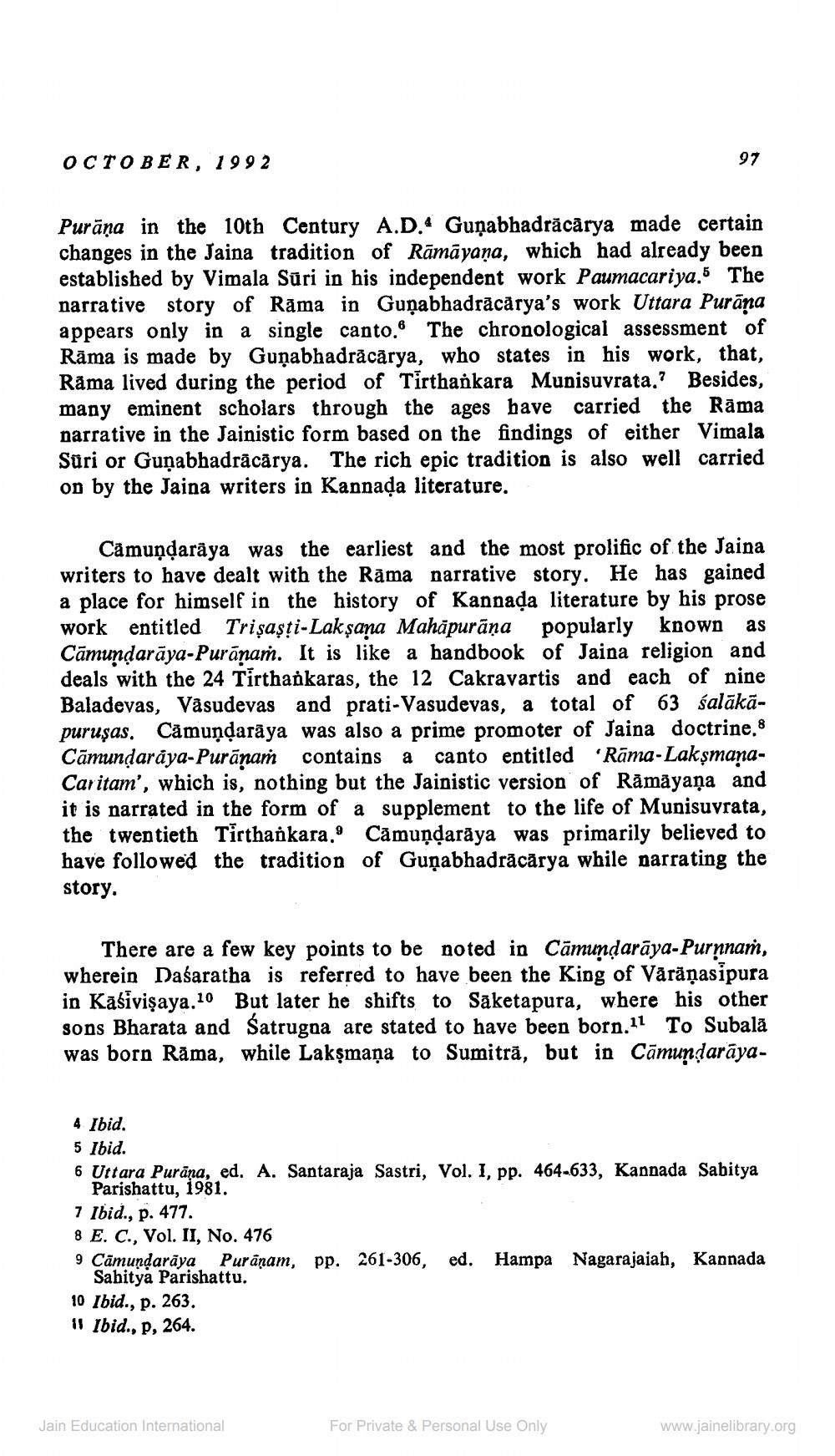________________
OCTOBER, 1992
Purāna in the 10th Century A.D.4 Guņabhadrācārya made certain changes in the Jaina tradition of Rāmāyaṇa, which had already been established by Vimala Sūri in his independent work Paumacariya.5 The narrative story of Rāma in Guṇabhadrācārya's work Uttara Purāna appears only in a single canto. The chronological assessment of Rāma is made by Guņabhadrācārya, who states in his work, that, Rāma lived during the period of Tirthankara Munisuvrata,? Besides, many eminent scholars through the ages have carried the Rāma narrative in the Jainistic form based on the findings of either Vimala Sūri or Guņabhadrācārya. The rich epic tradition is also well carried on by the Jaina writers in Kannada literature.
Câmuņdarāya was the earliest and the most prolific of the Jaina writers to have dealt with the Rāma narrative story. He has gained a place for himself in the history of Kannada literature by his prose work entitled Trişaști-Laksana Mahāpurāņa popularly known as Cāmundarāya-Puránaṁ. It is like a handbook of Jaina religion and deals with the 24 Tirthankaras, the 12 Cakravartis and each of nine Baladevas, Vasudevas and prati-Vasudevas, a total of 63 salākāpuruşas. Cảmundarāya was also a prime promoter of Jaina doctrine. Cāmundaraya-Purānaṁ contains a canto entitled 'Rāma-LakşmanaCaritam', which is, nothing but the Jainistic version of Rāmāyaṇa and it is narrated in the form of a supplement to the life of Munisuvrata, the twentieth Tirthankara.' Cămundarāya was primarily believed to have followed the tradition of Guņabhadrācārya while narrating the story.
There are a few key points to be noted in Cāmundarāya-Purnnań, wherein Dasaratha is referred to have been the King of Vārāṇasipura in Kasivişaya.10 But later he shifts to Säketapura, where his other sons Bharata and Satrugna are stated to have been born.11 To Subalā was born Rāma, while Lakşmaņa to Sumitrā, but in Cāmundarāya
4 Ibid. 5 Ibid. 6 Uttara Purāna, ed. A. Santaraja Sastri, Vol. I, pp. 464-633, Kannada Sabitya
Parishattu, 1981. 7 Ibid., p. 477. 8 E. C., Vol. II, No. 476 9 Cāmundarāya Puranam, pp. 261-306, ed. Hampa Nagarajaiah, Kannada
Sahitya Parishattu. 10 Ibid., p. 263. il Ibid., p, 264.
Jain Education International
For Private & Personal Use Only
www.jainelibrary.org




